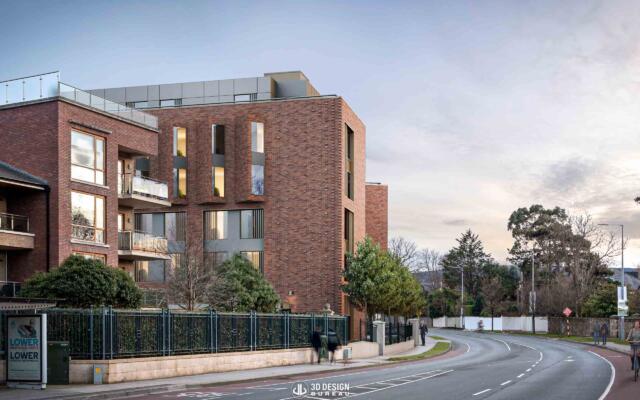The Irish planning system has been in need of significant reform for some time. Since the announcement and recent enactment of the new Planning and Development Act 2024, the demand and urgency for new housing have only grown.

Infrastructure in the housing context | How does it impact housing delivery? | Potential ways forward
Ireland’s housing delivery continues to fall short of government targets, with demand surpassing supply. To meet this need, an estimated 50,000 new homes are required annually until 2040.
However, recent data from Construction Information Service (CIS) shows that new home starts fell to just 2,840 in the first quarter of 2025, a considerable drop from over 14,000 in the previous quarter. By comparison, in Q1 of 2024, 11,944 new homes were underway.
In a recently published article, we explored some of the upcoming changes to Ireland’s planning system designed to tackle this challenge and increase housing delivery. However, another crucial factor continues to have a major impact on the pace of new home construction: infrastructure.
This article explores how Ireland’s infrastructure deficit directly affects housing targets, considers potential answers to the problem, and highlights how 3D solutions can help pave the way forward.
When we talk about infrastructure in relation to housing delivery, we are referring to something that encompasses the essential systems and services that make a place liveable and connected. These include:
• Transport networks – roads, rail, public transport, and cycling infrastructure that link homes to jobs, schools, and amenities.
• Utilities – water supply, wastewater treatment, electricity grids, and gas connections that allow developments to function.
• Social infrastructure – schools, healthcare facilities, parks, and community spaces that support residents’ quality of life.
• Digital infrastructure – high-speed broadband and telecommunications that are increasingly non-negotiable for modern living and working.
In Ireland, essential infrastructure is often struggling to keep pace with demand. The 2024 Irish Fiscal Advisory Council’s Ireland’s Infrastructure Demands report shows that water and wastewater networks in several urban centres are already operating at or near capacity, restricting the number of new homes that can be connected. The same report points to electricity grid constraints, which are delaying both housing and renewable energy projects.
Public transport expansions, essential for allowing for new residential areas, face their own obstacles. Lengthy planning and approval processes can add years before construction even begins, slowing the delivery of the infrastructure needed to support large-scale housing.
Like housing demand itself, these pressures are closely tied to population growth. Deloitte projects that Ireland’s population will increase by one million by 2040, a number that will further intensify demand and pressure on housing prices. The graph below from the Organisation for Economic Co-operation and Development (OECD) illustrates the changes in Ireland’s housing stock and how prices compare with other EU countries, as well as OECD’s Analytical House Price Indicators.
Together, these factors create a bottleneck that directly undermines national housing targets.
Tackling Ireland’s housing delivery shortage requires a coordinated approach between government, local authorities, utility providers, and the private sector. Investment in essential infrastructure is critical to unlocking development-ready land. Equally, the ongoing reforms to Ireland’s planning system, which we recently explored in this article, seek to streamline approvals and reduce the long lead times that often hold back both infrastructure and housing projects.
The Budget 2025, recently published by the Irish government, outlines an increase of €1.63 billion in capital expenditure, bringing the total to €14.9 billion, with much of this directed at health, housing, education, transport, and climate action. Notably, €3 billion has been earmarked specifically for infrastructure: €1 billion for water-related projects, €1.25 billion for housing infrastructure, and €750 million for electricity grid upgrades.
This funding boost, enabled by the partial sale of the State’s shareholding in Allied Irish Bank (AIB), is planned to align essential services with housing delivery needs. The Government has also proposed using the €14.1 billion from the recent EU State Aid case to address water, electricity, housing, and transport infrastructure, with a framework in development to guide its allocation and ensure strong returns.
At 3D Design Bureau, we know that accelerating housing delivery also relies on clear, accurate, and trusted communication of proposed developments. Solutions such as architectural CGIs, verified view montages, and daylight and sunlight assessments play an essential role in helping project teams secure planning permission and stakeholder buy-in. By showing how new housing will look and integrate its surrounding environment, these 3D solutions help local authorities streamline decision-making, ultimately supporting the fast delivery of much-needed homes.

Lucas Imbimbo
Digital Marketing Specialist
at 3D Design Bureau
lucas@3ddesighbureau.com
Thank you for your message. It has been sent.